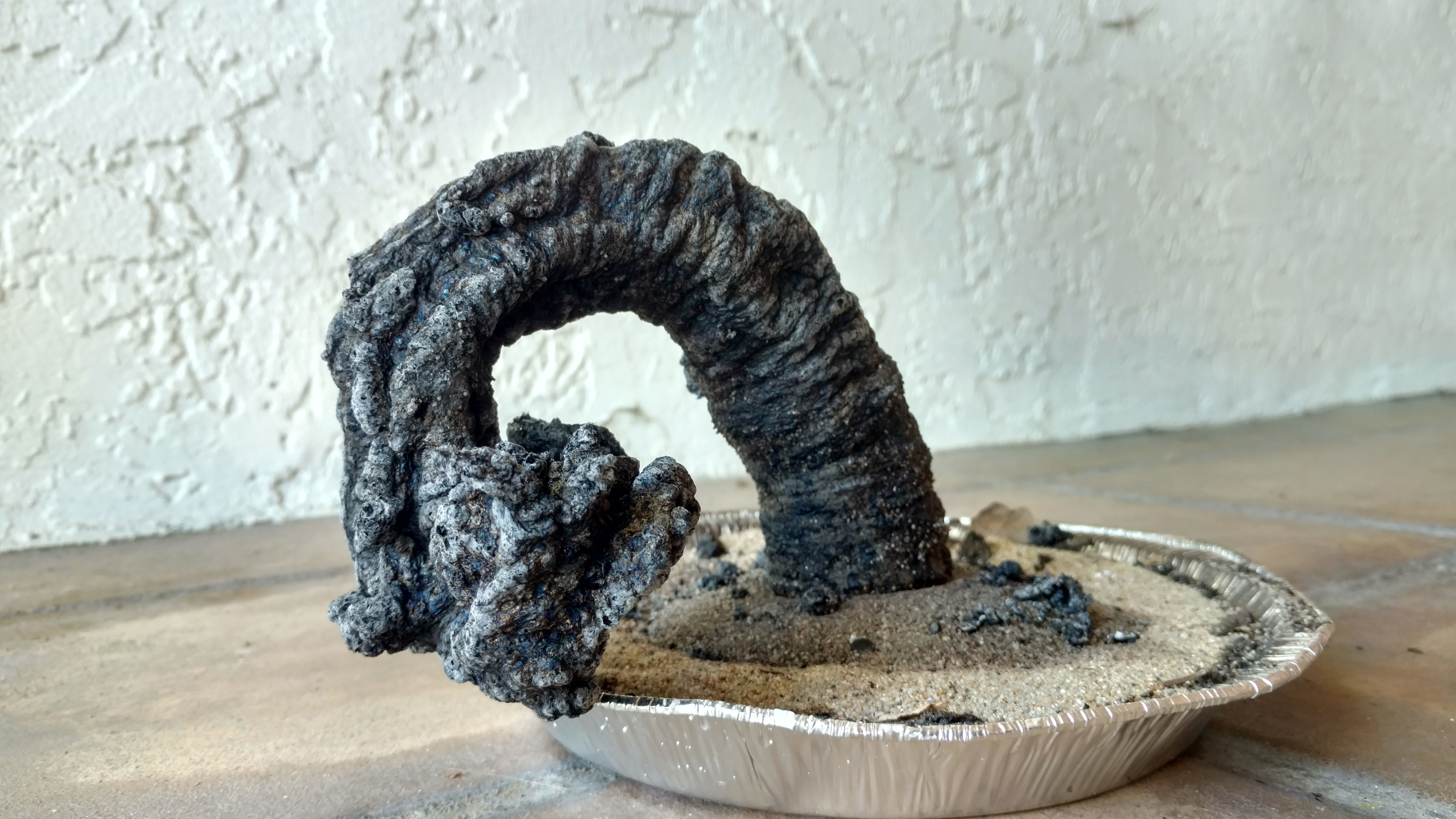Step-by-step tutorial
Step 1
In a bowl, combine 4 tsp of powdered sugar with 1 tsp of baking soda
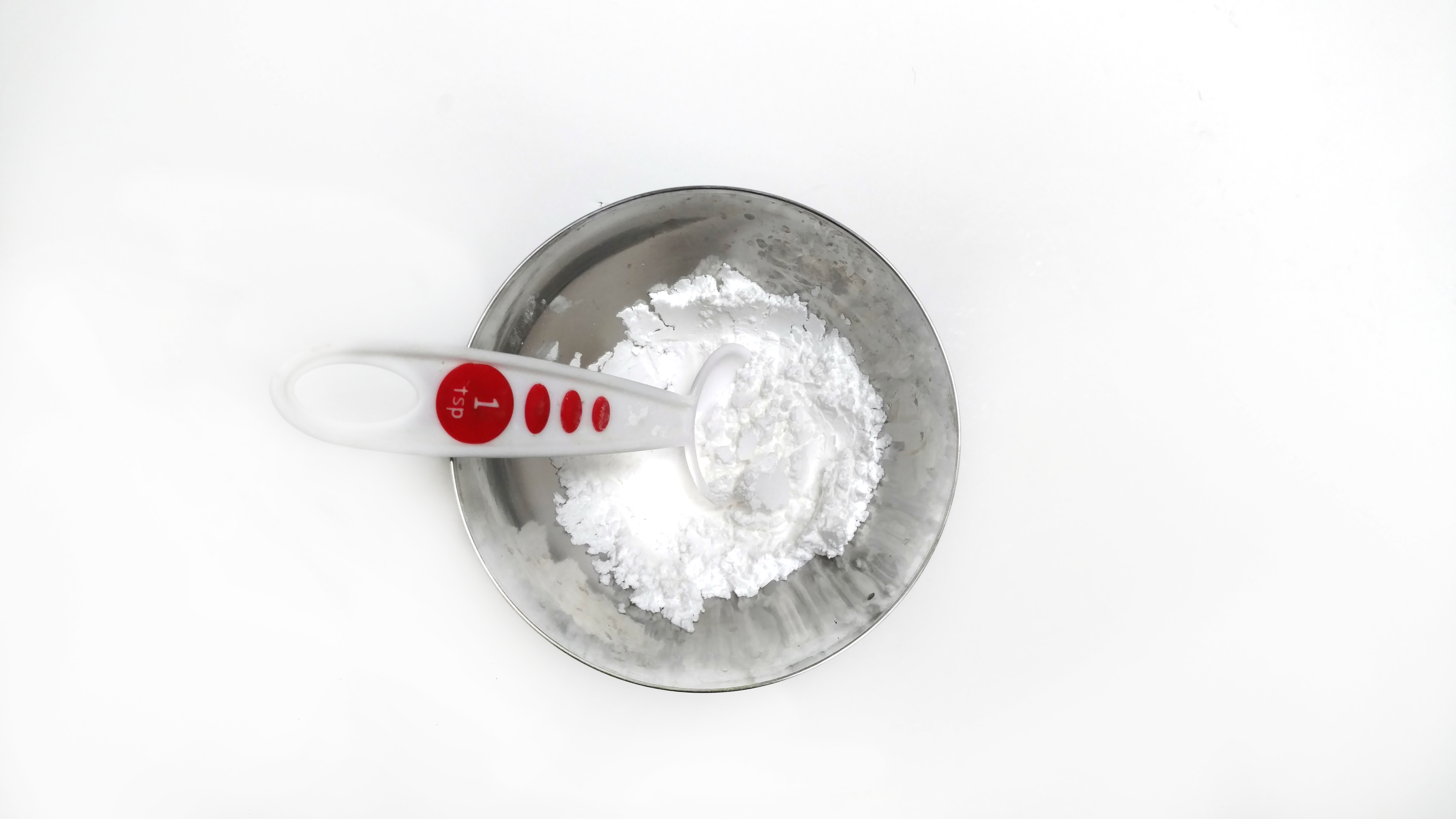
Step 2
Fill the pie tin with sand and create a small mound in the middle. Use your knuckle to make an indent in the middle of the mound.
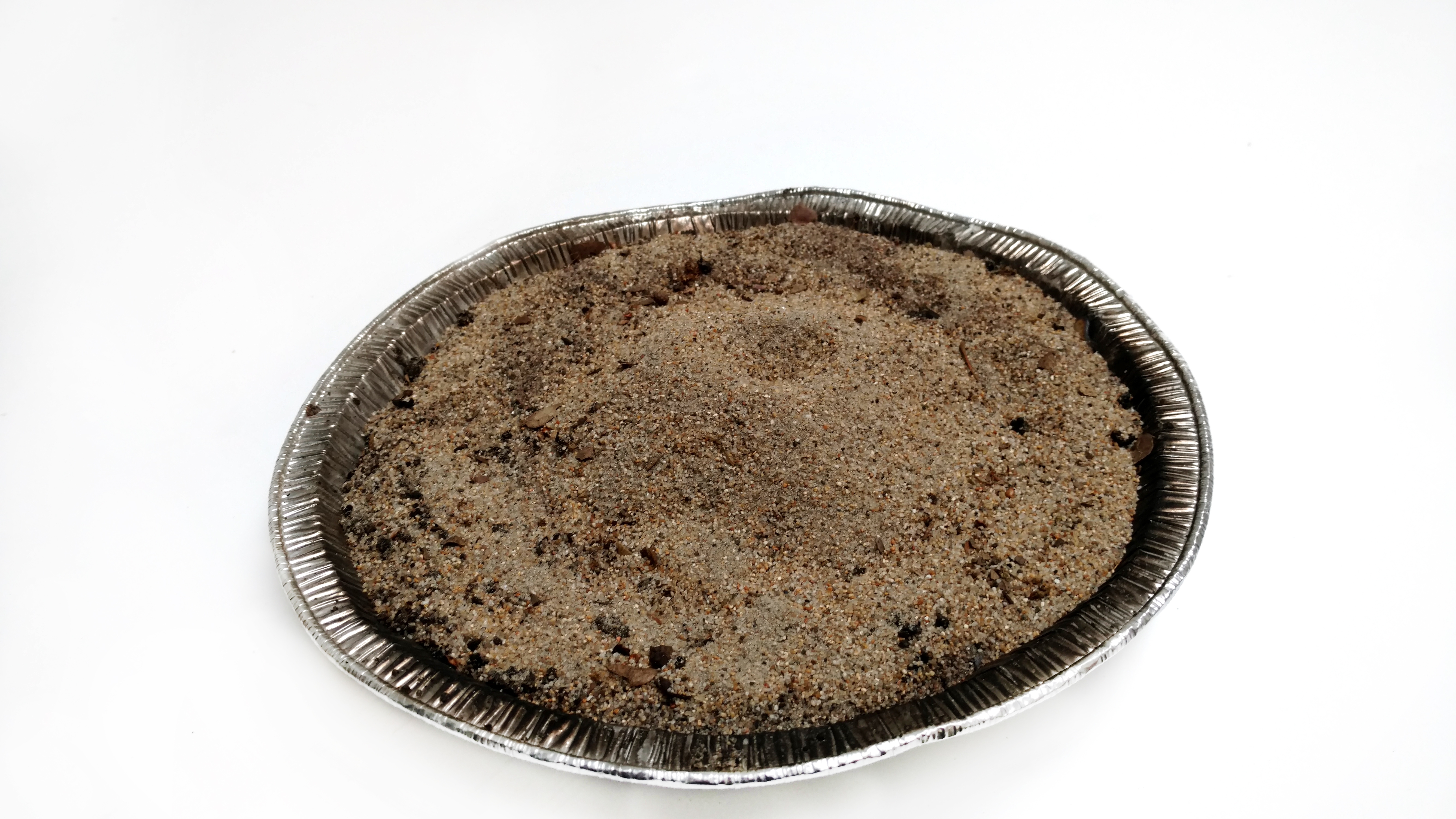
Step 3
Pour lighter fluid on the mound and in the indentation. Make sure that the sand is well soaked.

Step 4
Spoon your sugar and baking soda mix into the center of the mound.
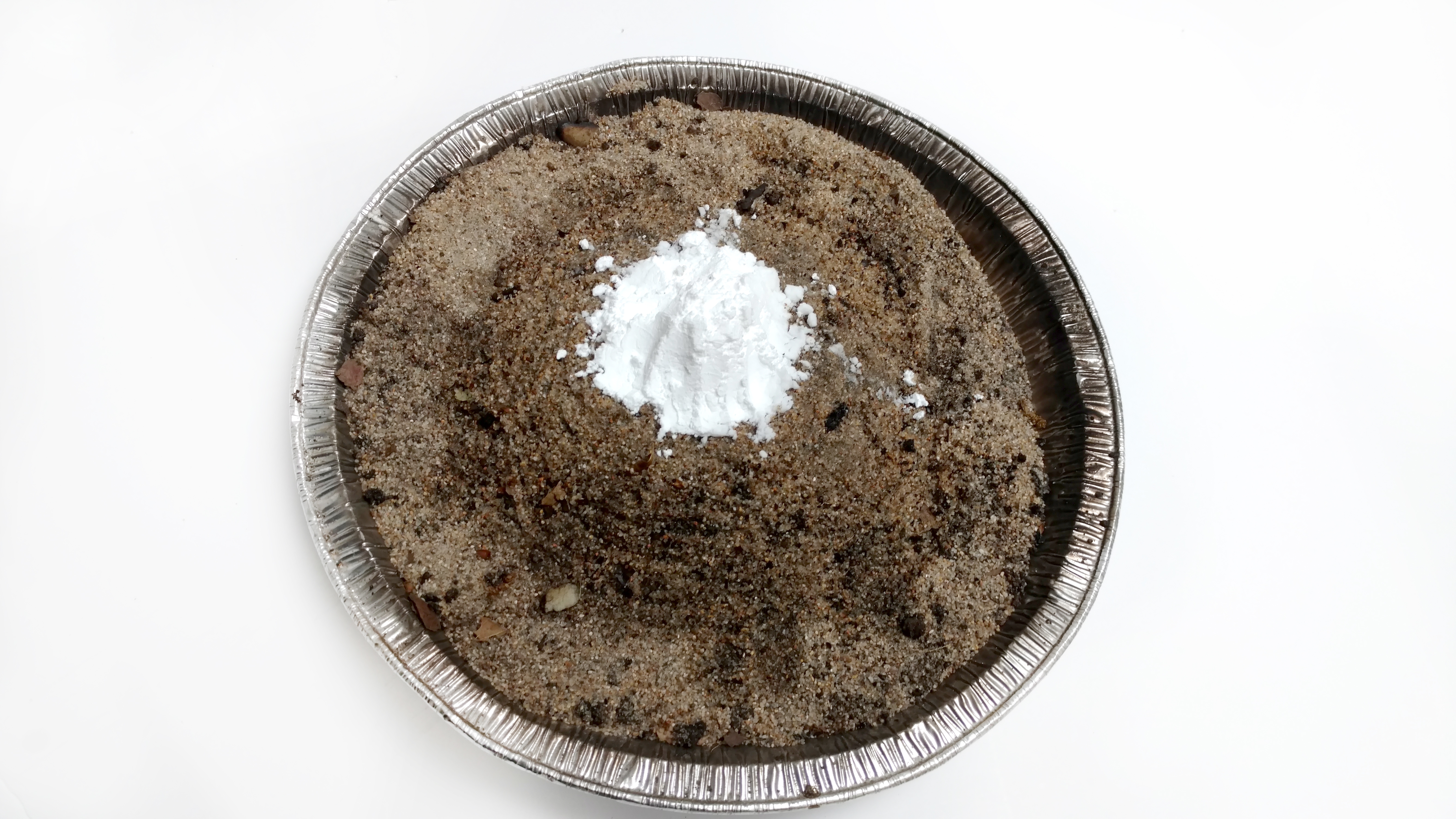
Step 5
Carefully light the sand near the sugar mixture. (An adult should perform or carefully supervise this step, if needed.) The sugar and baking soda mix will begin to bubble and turn black. As this mixture burns, watch as your snake begins to grow and take shape. It is a slow process so be patient! A snake will begin to form after a couple minutes and can continue to burn for over 20 min!
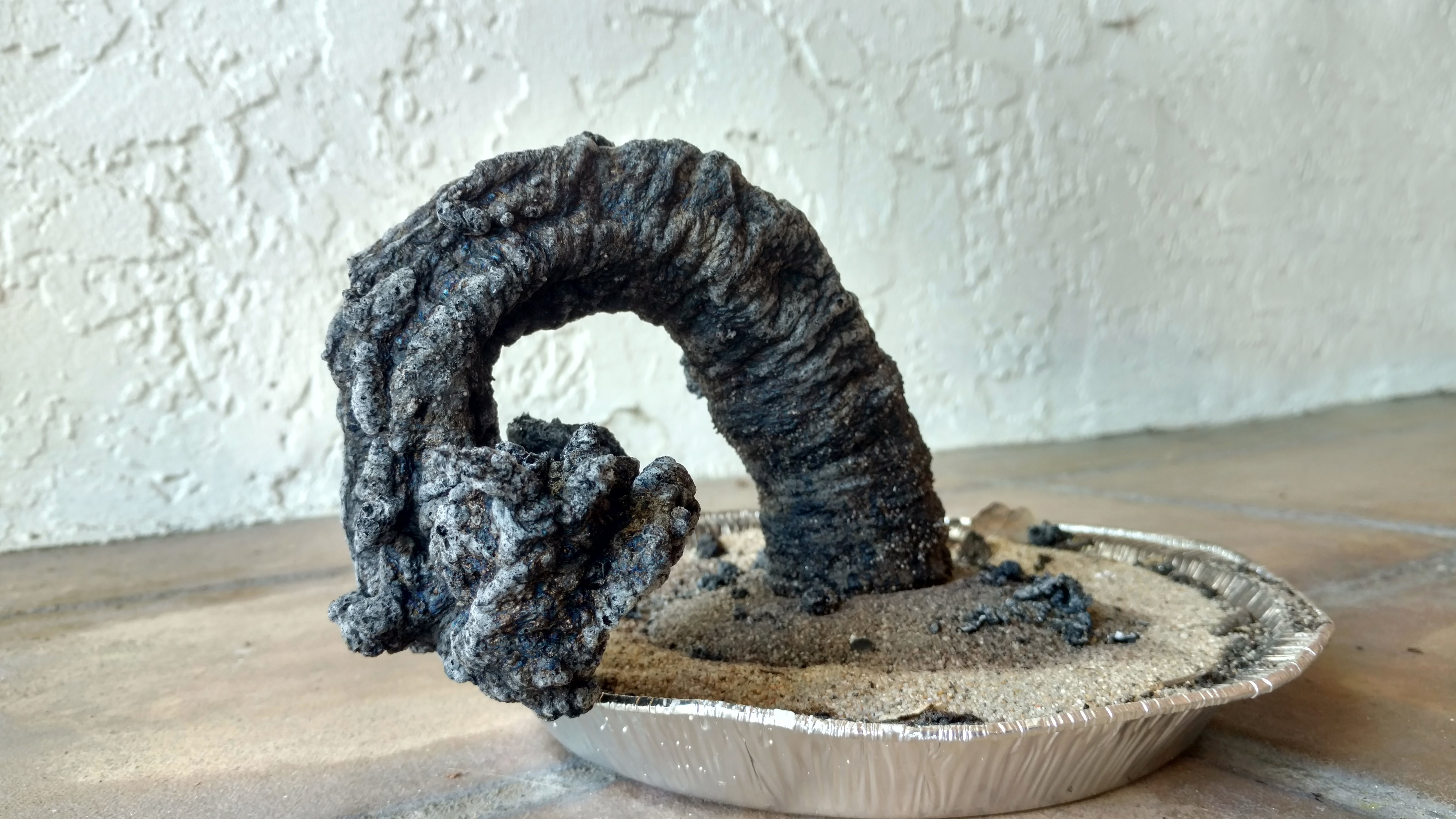
Learn more
What is going on?
Your carbon sugar snake is the product of three chemical reactions that are all dependent on heat.
The first of these reactions occurs when sugar combusts (burns) in the presence of oxygen. This produces carbon dioxide gas and water vapor (also a gas), which pushes more of the sugar/baking soda mixture upwards. Some of this additional sugar heats up but doesn’t have access to any oxygen, so instead of burning, it undergoes thermal decomposition, producing solid carbon and more water vapor. This solid carbon now gives the snake some shape, and also gives the snake its black color. Lastly, the baking soda also decomposes in the heat, producing solid sodium carbonate, and carbon dioxide gas and water vapor. Altogether, these three reactions produce both the solid components of the snake (carbon and sodium carbonate) and hot gases (CO2 and water vapor) that expand and inflate the snake up and out of the sand bowl.
The sand in this experiment doesn’t chemically react with anything in the growing snake. Instead, it evenly distributes the heat from the burning lighter fluid to the sugar and the baking soda, ensuring a slow, steady burn and the growth of a long carbon sugar snake.
